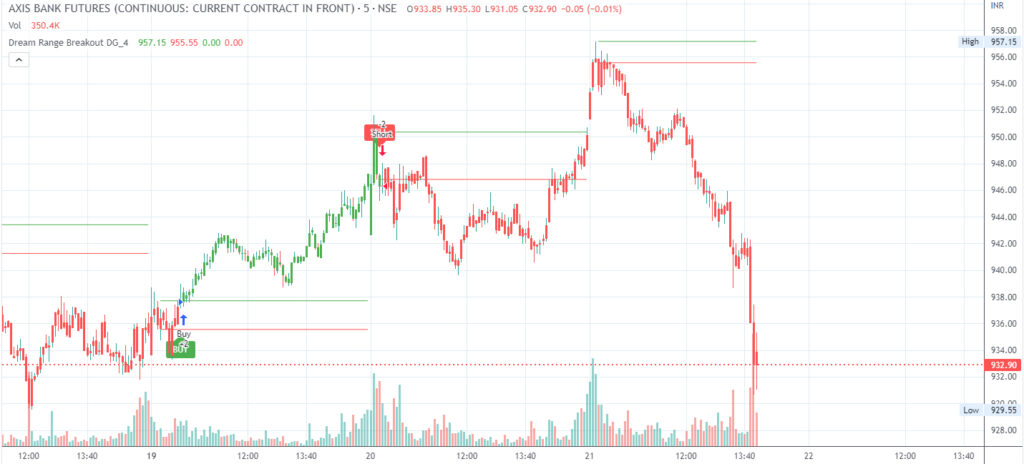Introduction
In the fast-paced world of financial markets, accurate and timely information is paramount for successful trading. Traders are always on the lookout for tools and indicators that can help them make informed decisions and capitalize on market movements. One such tool that has gained immense popularity is the real-time buy sell signal indicators for TradingView. In this comprehensive guide, we will delve into the intricacies of these indicators, exploring their benefits, types, strategies, and how traders can effectively use them to enhance their trading activities.

Understanding Real-Time Buy Sell Signal Indicators
1.1 What Are Buy Sell Signal Indicators?
Real-time buy sell signal indicators are technical tools used by traders to identify potential entry and exit points in the financial markets. These indicators analyze historical price data, volume, and other relevant market metrics to generate signals that help traders make decisions. These signals are presented visually on trading charts, making it easier for traders to interpret and act upon them.
1.2 Importance of Real-Time Signals
In today’s dynamic markets, the ability to react swiftly to price movements is crucial. Real-time signals provide traders with timely insights, enabling them to capitalize on emerging opportunities and manage risks effectively.
1.3 Key Features of Real-Time Indicators
Real-time buy sell signal indicators offer several key features that make them valuable tools for traders:
Instantaneous Analysis: Real-time indicators provide up-to-the-moment analysis of market conditions, allowing traders to make quick decisions.
Visual Representation: Signals are displayed directly on price charts, making it easy to interpret and act upon the information.
Customization: Traders can adjust indicator parameters, timeframes, and combinations to align with their strategies.
Benefits of Using Real-Time Buy Sell Signal Indicators
2.1 Enhanced Decision-Making
Real-time signals provide traders with timely information, aiding in quicker and more informed decisions.
2.2 Reduced Emotional Bias
Indicators rely on data and algorithms, reducing emotional trading and promoting discipline.
2.3 Time-Saving
Indicators automate the analysis process, saving traders time and effort in manual chart analysis.
2.4 Backtesting and Strategy Development
Traders can backtest indicators to evaluate their historical performance and develop effective trading strategies.
Strategies for Utilizing Real-Time Indicators
3.1 Trend Following
Indicators like moving averages and MACD can help traders identify and follow established trends.
3.2 Reversal Trading
Overbought and oversold conditions identified by RSI and stochastic indicators can signal potential reversals.
3.3 Divergence Trading
Divergence between price and indicator movements can highlight potential trend changes.
3.4 Breakout Trading
Bollinger Bands and support/resistance levels from Ichimoku Cloud can aid in identifying potential breakouts.
3.5 Scalping
Short-term traders can utilize indicators for quick entry and exit decisions in fast-moving markets.
Customizing and Fine-Tuning Indicators
4.1 Indicator Parameters
Traders can adjust indicator settings to match market conditions and trading preferences.
4.2 Setting Timeframes
Choosing appropriate timeframes enhances signal accuracy for different trading styles.
4.3 Combining Multiple Indicators
Combining indicators can provide a more comprehensive view of market conditions and increase signal reliability.
Pitfalls and Challenges
5.1 False Signals
No indicator is infallible, and false signals can occur, leading to poor trading decisions.
5.2 Market Volatility
Extreme market conditions can affect indicator accuracy and generate misleading signals.
5.3 Over-Reliance on Indicators
Traders should avoid over-relying on indicators and incorporate other forms of analysis.
Choosing the Right Buy Sell Signal Indicators
6.1 Market and Instrument Considerations
Different indicators may perform better in specific markets or for certain financial instruments.
6.2 Aligning with Trading Style
Traders should select indicators that suit their preferred trading style, whether it’s day trading, swing trading, or long-term investing.
Conclusion
Buy sell signal indicators for TradingView offer traders a valuable toolkit for making informed decisions in fast-moving financial markets. By understanding the types of indicators available, their benefits, strategies for utilization, and potential pitfalls, traders can harness the power of real-time signals to enhance their trading activities and increase their chances of success. As with any trading tool, thorough research, practice, and continuous learning are essential to effectively incorporate real-time indicators into a comprehensive trading strategy.
